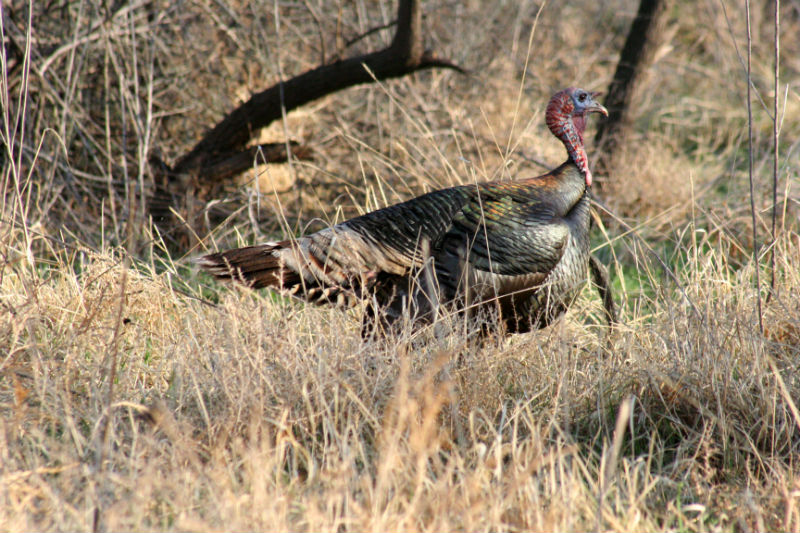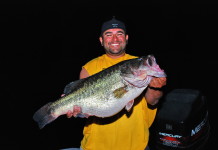Podcast: Play in new window | Download | Embed
Subscribe: Apple Podcasts | Google Podcasts | Email | RSS
It’s the second week in March which can mean only one thing: it’s about to be spring turkey hunting time.
In this installment of the show I’ll be offering up a forecast for the season as well as some tips and tactics and even a glimpse into the historical significance of the pursuit and why it’s a great introduction to the outdoors for youths and others who have yet to enjoy all that the Lone Star State has to offer.
Texas turkey hunting guide from A to Z
Watch your step when spring turkey hunting
Here’s a spring turkey hunting guide, coming from someone who knows more than a thing or two about missing out on bagging a bird.
When it comes to spring turkey hunting in Texas, there is plenty of trial and error.
While man has leveled the playing field in almost every pursuit, turkeys can make the most seasoned hunter look foolish with their uncanny ability to foil even the best-laid plans.
Though you should be skeptical of anyone who claims to be an expert turkey hunter, there are a number of things that you can count on when it comes to turkey hunting during the next six weeks.
Staying legal: There are a number of requirements that hunters must follow, successful outing or not. First, the annual bag limit in the aggregate for most counties is four birds, only one of which may be an eastern turkey. However, there are some counties to the south (Bastrop, Caldwell, Colorado, Fayette, Jackson, Lavaca, Lee and Milam) that adhere to a one-gobbler framework.
Turkey hunters also must ensure they have a $7 upland game bird stamp (endorsement) on their hunting license.
Hunters may shoot male birds (gobblers, jakes) and hens with beards, which are rare, during spring frameworks. The most common method of harvesting birds in the spring is with a shotgun, but some hunters still tote along a rifle, a bow or even a crossbow for Rios. If you’re hunting eastern turkeys, there are special regulations. They include not hunting over bait, and if you’re successful, you must take your bird to a certified check-in station within 24 hours. Rifles also may not be used to harvest eastern turkeys.
You must also must keep proof of sex (leg with spur, patch of feathers with beard) on your bird or birds until you get home and don’t breast them out until at a final destination.
Turkeys have excellent eyesight: The standard rule is to not move if you can see a turkey’s head, but sometimes it seems like they have X-ray vision through any type of brush and can bust you. Camouflage from head to toe is a requirement, as is staying completely still. Setting up with your back to a tree and having a comfortable seat will help.
Turkeys are sociable: They find each other by making any number of inflections – purrs, yelps, gobbles, cackles – and each bird has a slightly different alteration in its calls. The best thing is you don’t have to be a champion caller to entice birds.
Turkeys like their safety: They usually roost at night in big trees such as cottonwoods and stay there until it is light enough in the morning to determine friend from foe when they fly down. They also tend to bunch up during breeding season in the spring.
Turkeys are tough: It should be second nature to pattern the shotgun you’ll be using before heading into the field. You should use the same choke and loads you’ll have on your hunt. If you are able to put anywhere from 80 to 100 pellets into a 10-inch circle at 40 yards or even more into one at 30 yards, you should be able to have no problems making a clean shot on a bird that gets in range.
Turkey talk: There are a staggering variety of calls on the market, but they all can be broken down into basic categories. The box call probably is the most well-known. It consists of a striker and box. The striker is slid across the box and mimics any number of calls. Don’t touch the striking surfaces of the call as the oils in the skin can affect the sound and life of the call and also use only chalk that is free of oil and only use it on the underside of the lid when needed.
The slate call is another mainstay, utilizing a striker used in different motions on a slate surface to create sounds. Practice makes perfect — or even somewhat decent — with this type of enticer.
The mouth call has reeds in it that produce yelps and cackles when air is pushed in and around them. This call is the toughest to master, but if you do, it’s a great thing because it offers hands-free imitations. You should not let these calls get hot, or the latex in them can expand and alter the sound. To clean, simply rinse with cold water and spray with antiseptic to eliminate germs and bacteria that might get on the call.
The locator call is used to startle a turkey into gobbling. It can mimic an owl or crow, but I’ve even heard tales of hunters simply yelling out before daybreak and shocking birds into giving away their positions.
It’s no wonder turkey hunter success rates are less than 40 percent in most locales, but putting in time learning the terrain and practicing with your hunting implements will help swing the odds in your favor this season.
The good thing about making mistakes is being able to learn from them. And turkeys are about the best teachers around.





















